You are here: Activities and Events > Science Education in Kyoto 2013 > Abstract
Opening address
Akito Arima, Chancellor, Musashi Gakuen
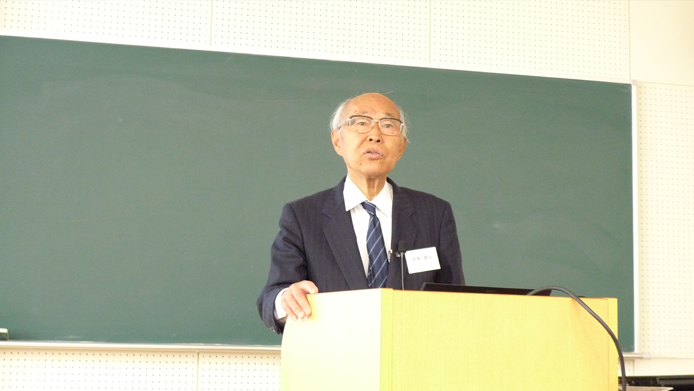
"Science Education in Elementary Schools: Current Status and Challenges"
Yoshiharu Hoshino, Professor, Graduate School of Teacher Education, Teikyo University
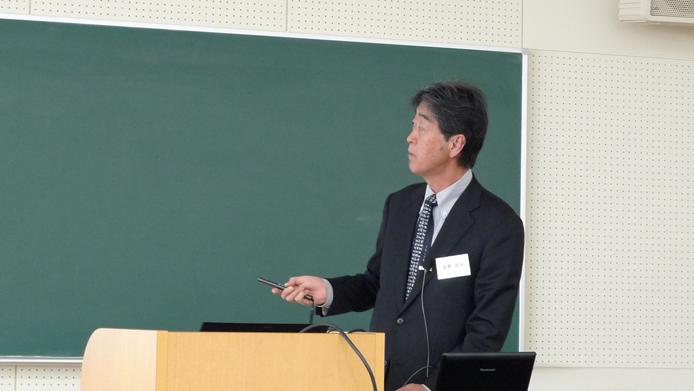 Elementary schools hold at least three hours of science lessons a week for at least three years. The objectives of such lessons are: (1) to develop problem-solving competencies, including comparative capacity, the capacity to identify factors, the capacity to control conditions, the capacity to make informed assumptions; and (2) to foster a love and respect for nature, including respect for human life and a protectionist approach toward biological life. Curriculum content is designed to familiarize students with basic scientific concepts, in such fields as particles, energy, life, and earth. Going forward, the time allocated to science within the overall curriculum should be increased, to allow classes to be enhanced with experimental and observational elements as well as the incorporation of foreign language learning activities. Systematic learning should also be introduced for younger students.
Elementary schools hold at least three hours of science lessons a week for at least three years. The objectives of such lessons are: (1) to develop problem-solving competencies, including comparative capacity, the capacity to identify factors, the capacity to control conditions, the capacity to make informed assumptions; and (2) to foster a love and respect for nature, including respect for human life and a protectionist approach toward biological life. Curriculum content is designed to familiarize students with basic scientific concepts, in such fields as particles, energy, life, and earth. Going forward, the time allocated to science within the overall curriculum should be increased, to allow classes to be enhanced with experimental and observational elements as well as the incorporation of foreign language learning activities. Systematic learning should also be introduced for younger students.
"Special Education in Science and Mathematics for Gifted Students: Current Status in South Korean and Taiwan"
Yasuo Sando, Nippon Steel & Sumikin Research Institute Corporation
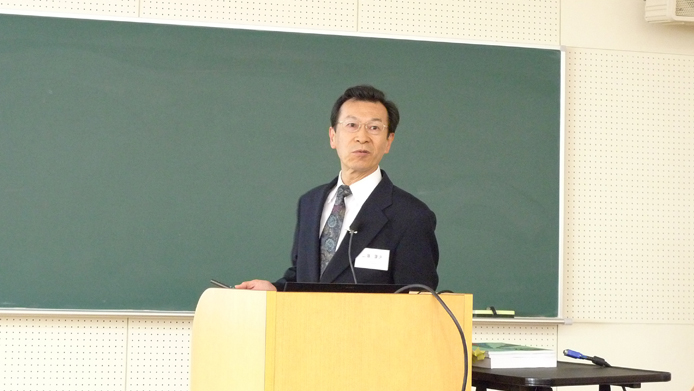 At the turn of the millennium, Taiwan and South Korea were quick to launch programs designed to identify gifted students at an early age as well as secondary-level programs of specialized education. Such programs were prompted by policy advocating the reinforcement of education in science and mathematics as the best method to ensure future success in increasingly competitive and globalized markets. Students with strong academic potential are identified at the elementary school level and provided with instruction from outstanding teaching staff and at educational institutions of the highest quality. They also participate in science contests and summer camps. Such countries have been successful in establishing educational environments that allow gifted students to experience intellectual stimulation not otherwise available through standard curricula, encouraging stronger appetites for learning.
At the turn of the millennium, Taiwan and South Korea were quick to launch programs designed to identify gifted students at an early age as well as secondary-level programs of specialized education. Such programs were prompted by policy advocating the reinforcement of education in science and mathematics as the best method to ensure future success in increasingly competitive and globalized markets. Students with strong academic potential are identified at the elementary school level and provided with instruction from outstanding teaching staff and at educational institutions of the highest quality. They also participate in science contests and summer camps. Such countries have been successful in establishing educational environments that allow gifted students to experience intellectual stimulation not otherwise available through standard curricula, encouraging stronger appetites for learning.
"Creating and Using Supplementary Educational Materials for Science"
Hiroshi Asada, Kyoto-city General Education Center
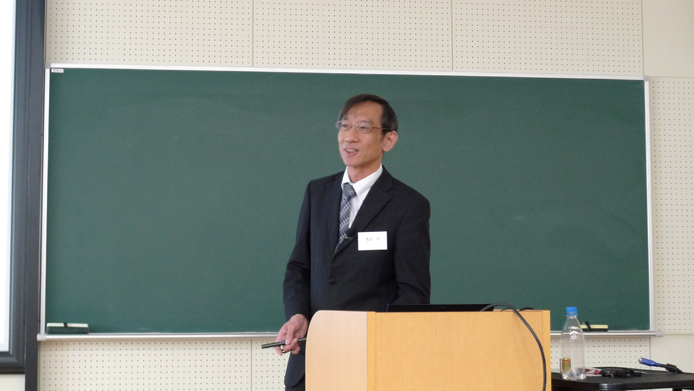 Teachers attending research seminars on science education in elementary schools often bemoan the lack of life experience among their young students. It is, however, impractical to expect to solve this problem by locating its contributory factor in the private and everyday lives of students. This lack of experience of natural phenomena must be tackled by introducing such experiences into school life and into the science classroom. Based on the kind of direct experience on which much of science is founded, namely observation and experimentation, the objective here must be to foster scientific thinking and the adoption of a scientific approach. Examples will be shown of the kind of educational materials teachers at municipal elementary schools in Kyoto City have been developing and using in the classroom.
Teachers attending research seminars on science education in elementary schools often bemoan the lack of life experience among their young students. It is, however, impractical to expect to solve this problem by locating its contributory factor in the private and everyday lives of students. This lack of experience of natural phenomena must be tackled by introducing such experiences into school life and into the science classroom. Based on the kind of direct experience on which much of science is founded, namely observation and experimentation, the objective here must be to foster scientific thinking and the adoption of a scientific approach. Examples will be shown of the kind of educational materials teachers at municipal elementary schools in Kyoto City have been developing and using in the classroom.
"Science Education in Japanese Junior High Schools: Current Status and Challenges"
Yuji Takahata, President, Japanese Research Council on Science Education and Junior High Schools
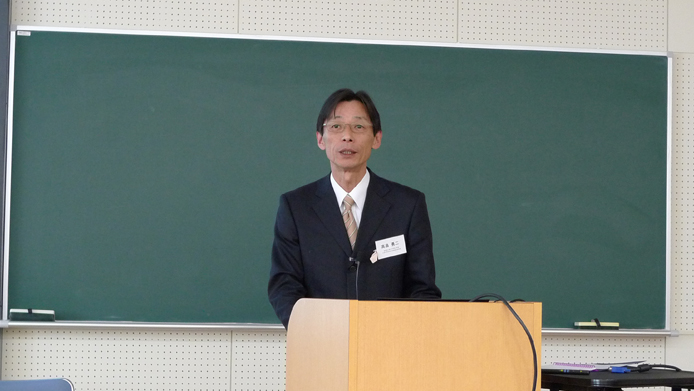 The new national guidelines for school curriculum, introduced at the beginning of the 2012 academic year, required increases of around 30%, compared to the requirements of the previous guidelines, in both the amount of lesson time and the curriculum content. At the same time, the guidelines abolished elective subjects. In practice, however, no measures are being carried out to provide the necessary personnel and material support required to be able to cope with such increases. There has also been little improvement in the awareness of teachers themselves regarding explorative learning and problem-solving based learning, both approaches highlighted as critical within the new guidelines. The Research Council is committed to making a meaningful contribution to the improvement of the current circumstances of science education in junior high schools as well to meeting the needs of society with regard to science learning.
The new national guidelines for school curriculum, introduced at the beginning of the 2012 academic year, required increases of around 30%, compared to the requirements of the previous guidelines, in both the amount of lesson time and the curriculum content. At the same time, the guidelines abolished elective subjects. In practice, however, no measures are being carried out to provide the necessary personnel and material support required to be able to cope with such increases. There has also been little improvement in the awareness of teachers themselves regarding explorative learning and problem-solving based learning, both approaches highlighted as critical within the new guidelines. The Research Council is committed to making a meaningful contribution to the improvement of the current circumstances of science education in junior high schools as well to meeting the needs of society with regard to science learning.
Discussion
Char: Misao Sasaki, Yukawa Institute for Theoretical Physics, Kyoto University
Discussants: Akito Arima, Michiharu Nakamura, Makoto Kobayashi,
Hiroo Imura, Kazuo Oike, Kazuo Kitahara
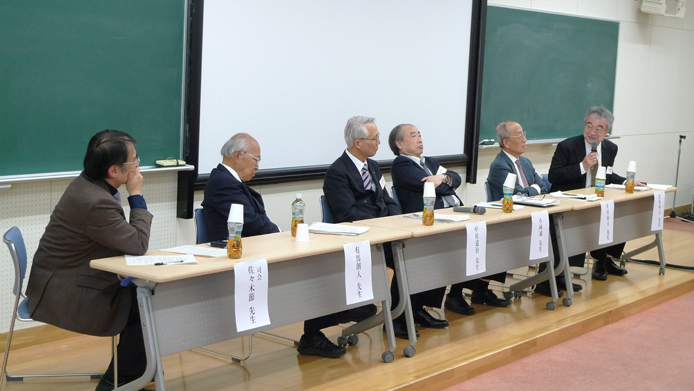
"Super Science High School (SSH) Activities"
Isao Iizawa, Kyoto City Horikawa High School
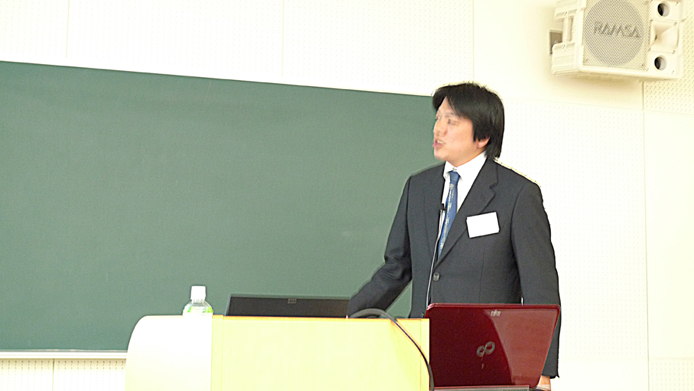 Research conducted on SSH over a 12 year period at Kyoto Municipal Horikawa High School has made clear that many issues remain with the project-based studies undertaken by high school students. Three of the most central issues are: (1) identifying appropriate learning themes; (2) incorporating those learning themes into study project plans; (3) being able to justify choices using written evidence. This presentation will focus on the measures adopted by Horikawa High School to resolve these issues.
Research conducted on SSH over a 12 year period at Kyoto Municipal Horikawa High School has made clear that many issues remain with the project-based studies undertaken by high school students. Three of the most central issues are: (1) identifying appropriate learning themes; (2) incorporating those learning themes into study project plans; (3) being able to justify choices using written evidence. This presentation will focus on the measures adopted by Horikawa High School to resolve these issues.
"Science Education to Stimulate Motivation of Students"
Toshiharu Tsushima, Adachi High School, Fukushima Prefecture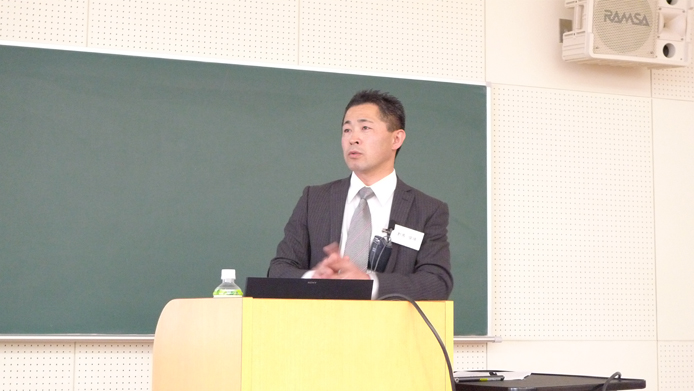 Students will always be able to achieve better results if they are dedicated to systematic learning and education. It is fundamentally important to inspire and to maintain motivation in this area. Moreover, the role of the school teachers, in facing students directly, is extremely important. The activities and science education curriculum of schools other than super science high schools have a vital role in education for sustainable development (ESD) in science and furthermore an important impact on education related to reconstruction and rebuilding, as seen in the Fukushima area affected by the earthquake and tsunami in March 2011.
Students will always be able to achieve better results if they are dedicated to systematic learning and education. It is fundamentally important to inspire and to maintain motivation in this area. Moreover, the role of the school teachers, in facing students directly, is extremely important. The activities and science education curriculum of schools other than super science high schools have a vital role in education for sustainable development (ESD) in science and furthermore an important impact on education related to reconstruction and rebuilding, as seen in the Fukushima area affected by the earthquake and tsunami in March 2011.
"The Physics Grand Prix"
Osamu Marukawa and Hidefumi Tooyama Kyoto Prefectural Board of Education
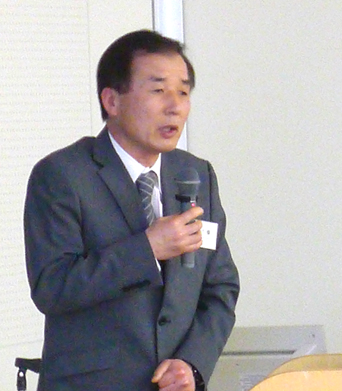
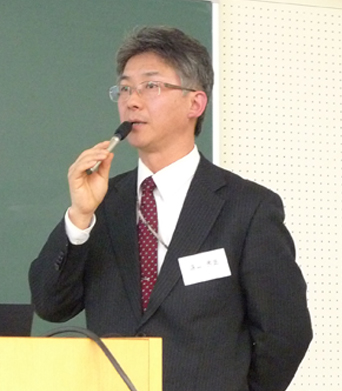 The Physics Grand Prix was established by the University of Kyoto and the Kyoto Prefectural Board of Education in 2010, in order to spark interest in physics among junior high and high school students and to encourage the adoption of a scientific approach to learning through experimentation and observation. First, students work on the two set of problems in physics, theory problems and experiment problems. Then they will challenge the more advanced training, this stage is called the Physics Grand Prix "Dojo". They attend lectures by the physicists, conduct own research and present their results. Graduate students will work as mentors through the second stage. Winners will be selected from groups as well as individuals.
The Physics Grand Prix was established by the University of Kyoto and the Kyoto Prefectural Board of Education in 2010, in order to spark interest in physics among junior high and high school students and to encourage the adoption of a scientific approach to learning through experimentation and observation. First, students work on the two set of problems in physics, theory problems and experiment problems. Then they will challenge the more advanced training, this stage is called the Physics Grand Prix "Dojo". They attend lectures by the physicists, conduct own research and present their results. Graduate students will work as mentors through the second stage. Winners will be selected from groups as well as individuals.
"Subject Choice and Salary: A Survey"
Kazuo Nishimura, Professor, Kobe University and Kyoto University
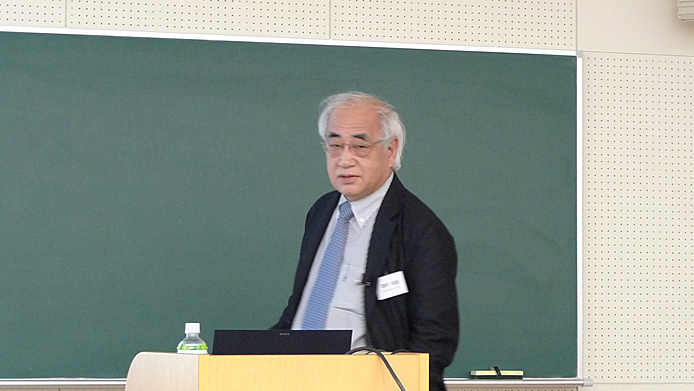 A survey was conducted in an attempt to establish the impact of choosing to learn mathematics and science on future careers. The survey also looked at examples in which academic ability was improved as a result of using self-study material as supplementary teaching material. Finally, the survey examined the issue of the significance of norms in terms of fostering a moral outlook in children.
A survey was conducted in an attempt to establish the impact of choosing to learn mathematics and science on future careers. The survey also looked at examples in which academic ability was improved as a result of using self-study material as supplementary teaching material. Finally, the survey examined the issue of the significance of norms in terms of fostering a moral outlook in children.
Discussion
Terufumi Ohno, Director of the Kyoto University Museum
Discussants: Akito Arima, Michiharu Nakamura, Makoto Kobayashi,
Hiroo Imura, Kazuo Oike, Kazuo Kitahara
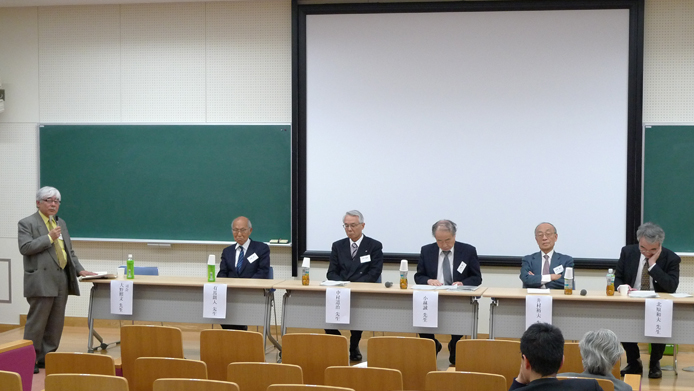
Opening address
Akito Arima, Chancellor, Musashi Gakuen
"Science Education in Elementary Schools: Current Status and Challenges"
Yoshiharu Hoshino, Professor, Graduate School of Teacher Education, Teikyo University
"Special Education in Science and Mathematics for Gifted Students: Current Status in South Korean and Taiwan"
Yasuo Sando, Nippon Steel & Sumikin Research Institute Corporation
"Creating and Using Supplementary Educational Materials for Science"
Hiroshi Asada, Kyoto-city General Education Center
"Science Education in Japanese Junior High Schools: Current Status and Challenges"
Yuji Takahata, President, Japanese Research Council on Science Education and Junior High Schools
Discussion
Char: Misao Sasaki, Yukawa Institute for Theoretical Physics, Kyoto University
Discussants: Akito Arima, Michiharu Nakamura, Makoto Kobayashi,
Hiroo Imura, Kazuo Oike, Kazuo Kitahara
"Super Science High School (SSH) Activities"
Isao Iizawa, Kyoto City Horikawa High School
"Science Education to Stimulate Motivation of Students"
Toshiharu Tsushima, Adachi High School, Fukushima Prefecture
"The Physics Grand Prix"
Osamu Marukawa and Hidefumi Tooyama Kyoto Prefectural Board of Education
"Subject Choice and Salary: A Survey"
Kazuo Nishimura, Professor, Kobe University and Kyoto University
Discussion
Terufumi Ohno, Director of the Kyoto University Museum
Discussants: Akito Arima, Michiharu Nakamura, Makoto Kobayashi,
Hiroo Imura, Kazuo Oike, Kazuo Kitahara



